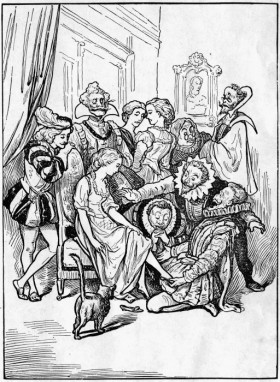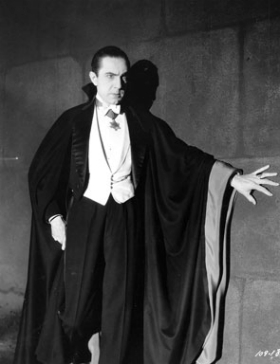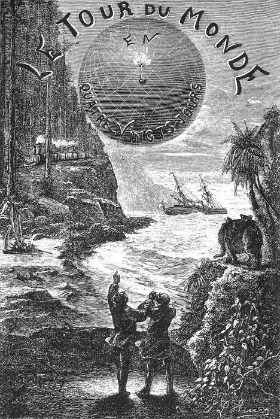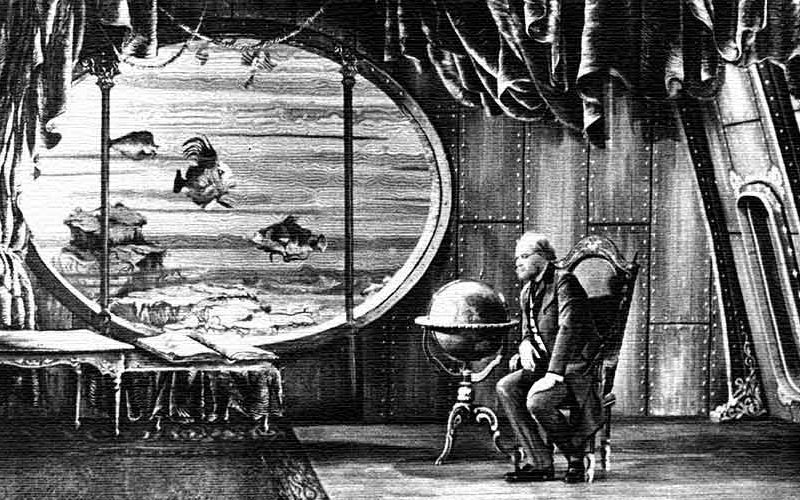Do your kids adore Cinderella and Sleeping Beauty? Are you a fan of Twilight or True Blood?
Did you catch Ridley Scott’s Prometheus on the big screen? Or is Doctor Who more your style?
We can trace the roots of fantasy, horror, and science fiction to three writers who had one thing in common—all were creative late bloomers.
Charles Perrault, Bram Stoker, and Jules Verne started their careers in law or government. They went to the office, supported their families, and imagined curious worlds on the side.
Perrault published Tales from Mother Goose at age 69, Stoker published Dracula at 50, and Verne published Journey to the Center of the Earth at 36.
Although they got off to a slow start, they prove creativity has no “use by” date.
“Once Upon a Time…” ~Tales From Mother Goose
Once upon a time there was a boy who lived in the shadow of his talented family.
His father was an attorney and his brother designed part of the Louvre Palace—but Charles Perrault couldn’t settle on a career. To make his father happy, he enrolled in law school, sat for the bar, but never practiced.
Perrault eventually landed a government job composing inscriptions for royal monuments. There, he used his power to oppose making the Tuileries Gardens a royal park. Because of him, the Gardens remain public to this day.
At age 67, Perrault retired and devoted himself to writing. Two years later, in 1697, he published Tales From Mother Goose.
 Perrault gave us the phrase “Once upon a time” and introduced the world to Cinderella, Sleeping Beauty, Little Red Riding Hood, and many more. He adapted these tales from oral tradition, stories told by the common folk.
Perrault gave us the phrase “Once upon a time” and introduced the world to Cinderella, Sleeping Beauty, Little Red Riding Hood, and many more. He adapted these tales from oral tradition, stories told by the common folk.
And perhaps in gratitude for their park, the common folk made him a 70-year-old celebrity.
“We learn from failure, not from success!” ~Dracula
Like Perrault, Bram Stoker waffled through his 20s. He got a graduate degree in Math, worked as a government clerk, and penned theater reviews.
At age 29, Stoker wrote a gushing piece about Henry Irving, Victorian England’s greatest actor. Irving invited Stoker to dinner to thank him and asked Stoker to become his personal assistant. The job would last over two decades.
 Irving, however, was a narcissist and nonstop drama queen. He wore a black cape, which he swirled for effect when he walked. He expected Stoker’s complete obedience. Stoker both worshiped and abhorred him.
Irving, however, was a narcissist and nonstop drama queen. He wore a black cape, which he swirled for effect when he walked. He expected Stoker’s complete obedience. Stoker both worshiped and abhorred him.
In his 40s, Stoker began writing, perhaps to escape Irving’s influence. At age 43, he published a completely forgettable romance. But then he got an idea for another book, about a mesmerizing bloodsucker who wore a black cape.
Dracula was published in 1897, when Stoker was 50. When he asked Irving what he thought of the book, Irving replied, “Dreadful!” He refused to star in a theatrical adaptation and the two parted ways.
Stoker wrote prolifically for another 15 years. Dracula has never been out-of-print.
“Anything one man can imagine, other men can make real.” ~Around the World in Eighty Days
Like Perrault, Jules Verne did a stint in law school to please his father, and like Stoker, he stumbled into theatre. Verne spent eight years writing forgettable comic operas.
But at age 29, h fell in love and decided to get a “real” job. His brother-in-law set him up as a stockbroker. Verne loathed it.
Although he gave up comic operas, he continued to write and experimented with different forms. He wrote to escape and he wrote of escape—fanciful journeys to worlds unknown.
 After six years as a mediocre stockbroker, Verne published A Journey To The Centre Of The Earth and From The Earth to the Moon. They weren’t immediate bestsellers, but Verne kept at it. Around The World In 80 Days and 20,000 Leagues Under the Sea made him a household name.
After six years as a mediocre stockbroker, Verne published A Journey To The Centre Of The Earth and From The Earth to the Moon. They weren’t immediate bestsellers, but Verne kept at it. Around The World In 80 Days and 20,000 Leagues Under the Sea made him a household name.
Verne penned over 80 novels between age 36 and his death forty years later. National Geographic credits him with foreseeing newscasts, solar sails, lunar modules, video conferencing, and electric submarines.
* * *
I can’t wait for the next season of ABC’s fabulous series, Once Upon A Time, where an evil curse transports all our favorite storybook characters to the modern world. They’ve lost their memories and their magic. They struggle with day-to-day life, like we do.
Do you sometimes feel “it’s never too late” has become a cliche? That’ll you’ll never reach your dreams?
For one week, try this. Note the times you encounter a fairy tale, vampire, horror story, or science fiction reference on TV or the Internet.
Give a nod of thanks to Charles Perrault, Bram Stoker, and Jules Verne, late bloomers whose imaginations have so enriched our lives. Then take out a piece of paper and title it, “Once upon a time I dreamed…” and finish the phrase. Let your imagination fly free.
The world of the future needs your story, too.
Credits
- The opening image comes from the ground-breaking 1958 movie The Fabulous World of Jules Verne by Czech filmmaker Karel Zeman. The film evokes the original illustrations for Verne’s works by combining live actors with various forms of animation.
- A version of this article first appeared in Jennings Wire: The World of Success.
